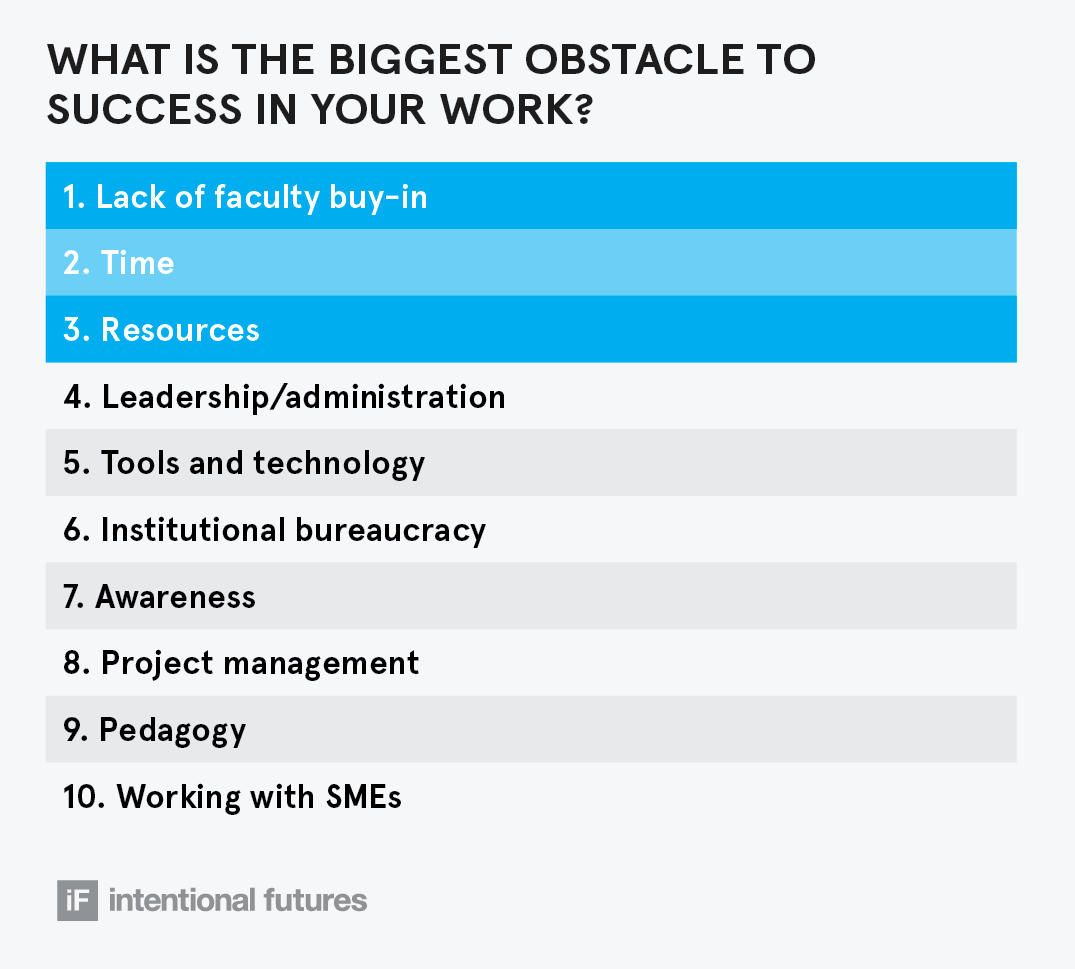They lurk behind the scenes of a rapidly growing number of courses at colleges and universities, yet instructional designers are an elusive bunch. Their field is exploding—The Chronicle of Higher Education ranked it as one of the top 10 trends in higher ed this year—as more institutions pursue online and blended-learning offerings. But there hasn’t been much consensus on the role of instructional designers across institutions. These professionals have various backgrounds, coming from web design, education and IT, to name a few.
As they increasingly move into leadership positions, new research seeks to help colleges and universities understand how instructional designers fit into their organizations—and how their work can impact student success. Intentional Futures, a Seattle-based design and consulting firm, released a new report on the role, workflow and experience of IDs across the U.S.
Sean Hobson, chief design officer for strategic design and development for EdPlus at Arizona State University, says the findings are illuminating for his field. The provide “a great snapshot into the complex role of the instructional designer, which, increasingly, is at the core of new delivery models and innovation in higher education,” he tells EdSurge.
Who Are Instructional Designers?
The Intentional Futures report was funded by the Bill & Melinda Gates Foundation and surveyed 853 people in instructional design. The study estimates at least 13,000 professionals are in the field at higher-ed institutions. Findings provide a glimpse of who instructional designers are:
- The average age of IDs is 45 years old
- 67 percent are female
- 87 percent have master’s degrees
- More than half have teaching experience
IDs reported that their duties vary from day to day, but that their work generally fits into four buckets: design (e.g., creating new or redeveloping old courses); management (e.g., overseeing projects from cradle to grave); training (e.g., helping faculty use new technologies); and support (e.g., providing timely help for LMS questions from faculty).
Biggest Obstacles
Colleges and universities are quickly ramping up digital efforts to reach more students. In 2013, there were 5.5 million students enrolled in distance education courses at degree-granting postsecondary institutions. Despite the growing demand for instructional design talent to shape these courses, those in the field face obstacles, especially faculty resistance and a lack of time.

Uncertain Career Paths
The career trajectory of IDs is evolving alongside the profession, and IDs are uncertain about their next move. One survey participant notes, “It’s actually really tough to think about growth paths for instructional designers. Long story short: there really aren’t any!” Respondents at entry, mid- and senior-level roles predicted their futures, with most saying they’d likely end up in admin roles.

For more on the skills instructional designers need, the tools they use, and recommendations for how universities can better support these professionals, check out Intentional Futures’ full report.
And next month, we’ll be co-hosting a free webinar series with experts sharing how instructional designers are making an impact in higher education. Sign up here.


